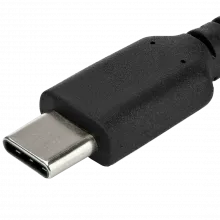
Developed at roughly the same time as the USB 3.1 specification, but distinct from it, the USB Type-C Specification 1.0 was finalized in August 2014 and defines a new small reversible-plug connector for USB devices.

Developed at roughly the same time as the USB 3.1 specification, but distinct from it, the USB Type-C Specification 1.0 was finalized in August 2014 and defines a new small reversible-plug connector for USB devices.